Embark on the awe-inspiring Laya Gasa Trek, a journey that stands as one of the most prestigious High Altitude Treks in Bhutan. This trek offers an extraordinary blend of breathtaking Himalayan landscapes, deep cultural immersion, and the thrill of adventure. Spanning over 217 kilometers from the picturesque Paro to the serene Gasa Hot Springs, the trek exposes adventurers to the untouched beauty of Jigme Dorji National Park and the towering peaks of Mount Jomolhari. Ideal for those seeking a challenging yet rewarding experience, the Laya Gasa Trek not only tests your endurance but also enriches your understanding of Bhutan's unique highland culture. Discover why this trek is a highlight of Bhutan Adventure Travel, and find out the best times and preparations necessary for this once-in-a-lifetime adventure.
Amen Bhutan Tours and Treks is the premier choice for embarking on the Laya Gasa Trek, renowned for their deep expertise and exceptional service in orchestrating high-altitude treks across Bhutan. With a profound understanding of the local culture and environment, they offer a meticulously planned itinerary that ensures safety, enjoyment, and a deep connection with the natural and cultural landscapes of Bhutan. Their experienced guides, comprehensive support services, and commitment to sustainable travel practices make Amen Bhutan Tours and Treks the best company to guide you through the breathtaking vistas and unique cultural experiences of the Laya Gasa Trek. Whether you're seeking adventure, tranquility, or a mix of both, their tailored trekking experiences are designed to surpass every expectation.
Stunning Panoramas
The Laya Gasa Trek offers some of the most stunning panoramas that Bhutan has to offer, making it a top destination for those who cherish breathtaking natural beauty. As trekkers traverse this high-altitude path, they are treated to a visual feast of the Himalayan landscape at its most dramatic and untouched.
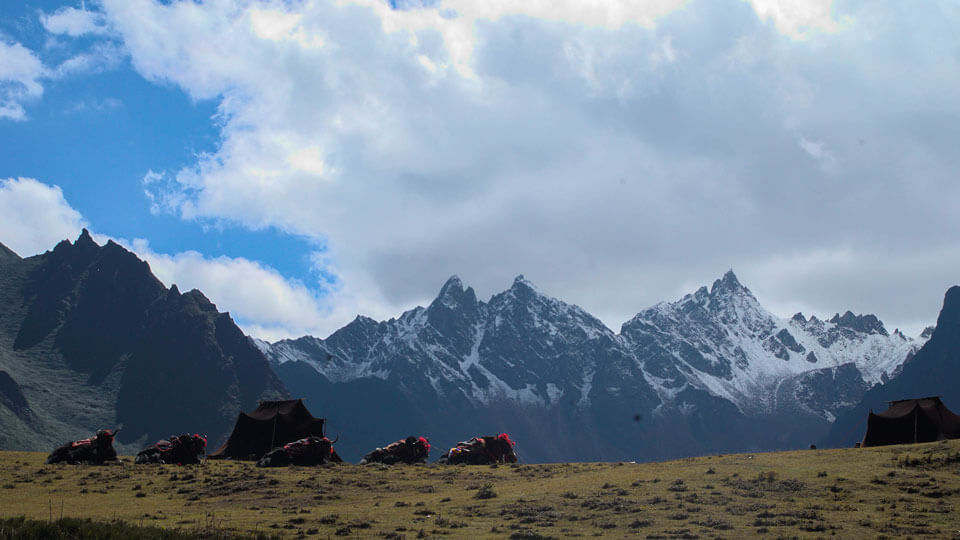
Key Views Along the Laya Gasa Trek
- Mount Jomolhari and Jichu Drake: These iconic peaks are among the most spectacular sights on the trek. Mount Jomolhari, often referred to as the "bride of Kangchenjunga," stands majestically at 7,326 meters, providing a stunning backdrop for several days of the journey.
- Vast Alpine Meadows: As the trek progresses, the trail winds through expansive alpine meadows that stretch wide under the vast Himalayan sky. These meadows are often dotted with wildflowers and grazing yaks, creating picturesque scenes that are quintessentially Bhutanese.
- Remote Valleys: The route delves into remote valleys that are secluded and serene, offering views that are pristine and largely untouched by modern influences. These valleys, with their tranquil rivers and traditional villages, encapsulate the timeless beauty of the Bhutanese wilderness.
- High Mountain Passes: Crossing high mountain passes such as Nyile La and Shinge La, trekkers reach viewpoints where the horizon stretches infinitely, showcasing layers of mountain ridges fading into the distance. These passes, often adorned with fluttering prayer flags, provide panoramic views that are both uplifting and awe-inspiring.
- Lush Forests: In the lower altitudes, the trek meanders through dense forests of blue pine, rhododendrons, and junipers. These forests often break open into clearings that offer sudden, stunning vistas of the valley below and the peaks beyond.
These stunning panoramas are not just visually arresting but also imbue a sense of vastness and tranquility, making the Laya Gasa Trek a profoundly picturesque experience. Whether you're an avid photographer or simply a lover of nature, the views along this trek are sure to leave a lasting impression.
Remote and Exotic Cultures
The Laya Gasa Trek not only offers breathtaking natural landscapes but also a unique opportunity to immerse in the remote and exotic cultures of Bhutan, particularly the distinctive lifestyle of the Layap community. As the trek ventures through the highlands of northern Bhutan, trekkers encounter communities living in ways that have remained largely unchanged for centuries.
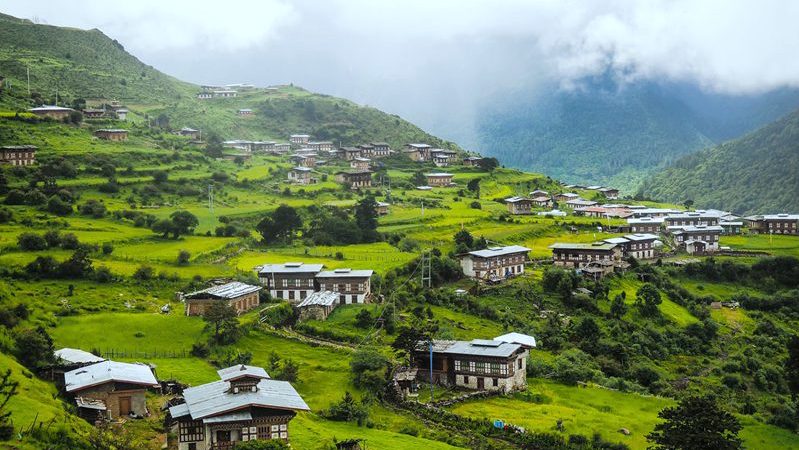
Key Cultural Highlights of the Laya Gasa Trek
- Layap Community: The village of Laya, which trekkers visit during the trek, is home to the Layap people, known for their unique customs and attire. Layaps wear distinctively woven bamboo hats and clothing made from yak hair and sheep wool. Their traditional lifestyle, which includes yak herding and subsistence farming, offers a glimpse into Bhutan's pastoral heritage.
- Traditional Architecture: The trek passes through several villages where the architecture is traditional and beautifully crafted. These houses are typically made of stone and wood, with roofs made of wooden shingles or slate. The intricately carved wooden windows and brightly painted exteriors reflect the Bhutanese aesthetic that prioritizes harmony with nature.
- Festivals and Spiritual Practices: Depending on the timing of the trek, visitors may have the chance to witness local festivals, which are a vibrant expression of Bhutanese culture. These festivals often include mask dances, traditional music, and communal meals, all of which are deeply imbued with spiritual significance.
- Ancient Monasteries and Rituals: The trek route is dotted with ancient monasteries that are active centers of spiritual life for the local communities. Trekkers can observe rituals and prayers that have been practiced in the same manner for generations, offering insights into the spiritual depth of Bhutanese culture.
- Interaction with Local People: The trek offers numerous opportunities to interact with local people, providing an authentic insight into their daily lives, values, and traditions. These interactions are often enriching for both trekkers and locals, as they exchange stories and perspectives.
- Sustainable Lifestyle: Observing the sustainable ways in which local communities interact with their environment is a lesson in conservation and respect for nature. The use of local resources, from building materials to food, underscores a lifestyle that is closely intertwined with the natural world.
These cultural experiences add a rich layer to the Laya Gasa Trek, making it not just a physical journey through stunning landscapes but also an exploration into the heart of Bhutan's cultural heritage. For many trekkers, these interactions and observations are among the most memorable aspects of their visit to Bhutan.
Rich Biodiversity
The Laya Gasa Trek traverses through the Jigme Dorji National Park, one of Bhutan's largest protected areas, showcasing an incredible range of biodiversity. This region is a crucial sanctuary for many of the Himalayas' most iconic species, as well as a variety of lesser-known flora and fauna. The trek's passage through diverse ecological zones, from subtropical forests to alpine meadows, provides trekkers with a unique opportunity to experience this rich biodiversity firsthand.
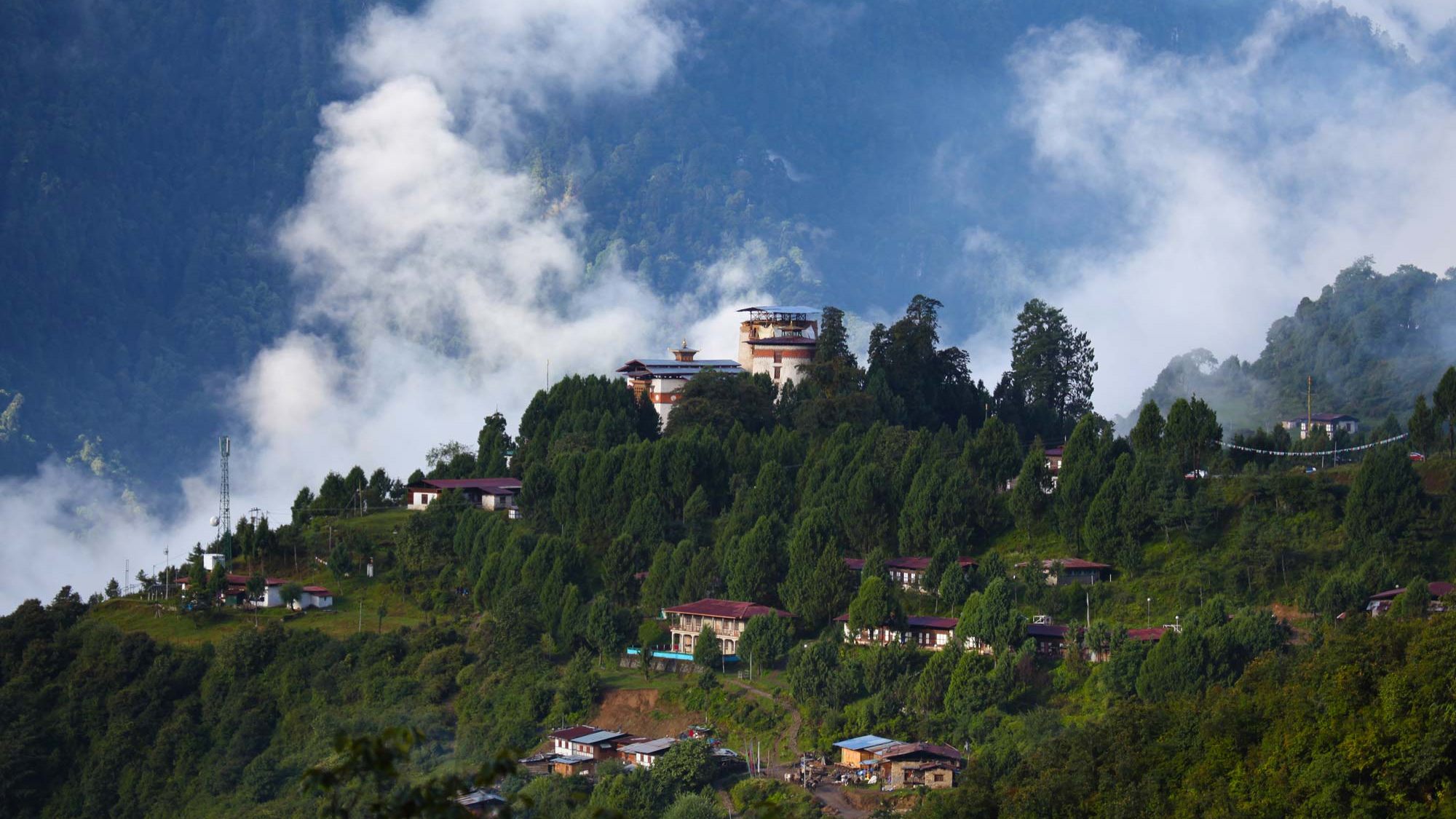
Highlights of Biodiversity Along the Laya Gasa Trek
- Varied Ecosystems: Starting in the lush lower valleys, the trek moves through dense forests, high alpine meadows, and rugged mountainous terrain. Each zone supports a distinct set of species adapted to its particular environmental conditions.
- Endangered Wildlife: The Jigme Dorji National Park is home to several globally threatened species, including the elusive snow leopard, the red panda, and the Bhutan takin. The park also provides habitat for the Bengal tiger, Himalayan black bear, and blue sheep.
- Birdlife: For bird enthusiasts, the trek is a paradise with over 300 species of birds recorded in the area. Notable species include the Himalayan monal, satyr tragopan, and various types of pheasants and eagles, each adding a splash of color and song to the journey.
- Floral Diversity: The trek showcases a stunning array of plant life, especially vivid during the spring and summer months when the rhododendrons, magnolias, and wildflowers are in full bloom. The region's significant altitude variations contribute to its rich plant diversity, ranging from subtropical species in the lower areas to alpine vegetation in the higher zones.
- Medicinal Plants: The local communities have long used a variety of plants found along the trek for traditional medicine. Knowledge about these plants is deeply embedded in the local culture, and many species are considered vital for their medicinal properties.
- Aquatic Biodiversity: The trek also offers glimpses of the rich aquatic life in the rivers and streams that crisscross the landscape. These waters are home to a variety of fish species, some of which are endemic to the region.
The Laya Gasa Trek not only challenges trekkers physically but also offers them the chance to witness the complex interplay of ecological systems in one of the world's most biologically diverse regions. This exposure to such a variety of life forms enhances the trekking experience, making it a truly holistic adventure into the natural world.
Therapeutic Hot Springs
One of the most cherished features of the Laya Gasa Trek is the opportunity to relax in the therapeutic hot springs at Gasa. These natural hot springs are not only a delightful way to soothe tired muscles after days of challenging hiking but also offer health benefits and a unique cultural experience.
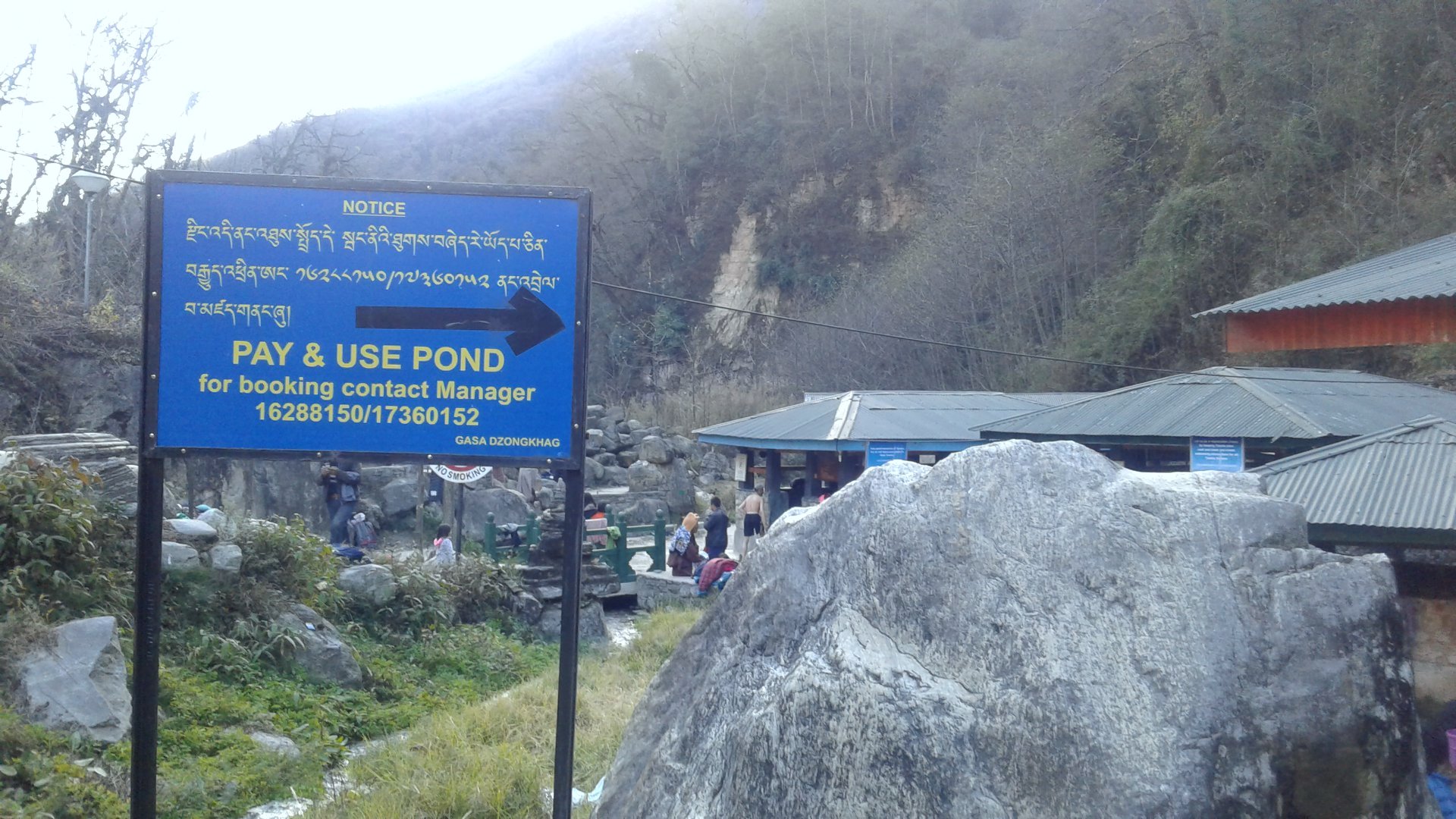
Key Features of the Gasa Hot Springs
- Location and Accessibility: The Gasa Hot Springs, locally known as Tshachu, are conveniently located near the end of the trek, providing a perfect respite after the rigorous journey through the mountains. Nestled in a beautiful valley beside a river, the setting is serene and adds to the restorative experience.
- Healing Properties: The mineral-rich waters of these hot springs are reputed for their healing properties, particularly beneficial for joint pains, arthritis, and skin conditions. The warmth and minerals combined offer a natural therapy that rejuvenates the body and spirit.
- Cultural Significance: For the local Bhutanese, the Gasa Hot Springs are more than just a recreational spot; they are an integral part of traditional healing practices. Visiting these hot springs is considered a spiritual and cleansing experience, deeply rooted in local customs and beliefs.
- Infrastructure: The facilities around the hot springs are designed to blend with the natural environment while providing comfort to visitors. There are separate pools for men and women, and simple amenities are available to ensure a pleasant stay.
- Community Interaction: The hot springs also serve as a social gathering place for both locals and visitors. This interaction allows trekkers to engage with the Bhutanese people in a relaxed setting, learn more about their way of life, and share stories from the trek.
- Year-Round Access: Though the Laya Gasa Trek is best undertaken in the spring or autumn, the hot springs at Gasa are accessible and enjoyable year-round. In the colder months, the steam rising from the hot waters against a backdrop of snow-capped mountains creates a magical atmosphere.
Visiting the Gasa Hot Springs is a highlight for many trekkers on the Laya Gasa Trek. It offers a perfect combination of natural beauty, cultural insight, and physical rejuvenation, making it an essential part of the trekking experience in Bhutan.
Challenging Passes
The Laya Gasa Trek is renowned not just for its cultural and natural beauty but also for the challenging mountain passes it encompasses. These passes are not only physical hurdles but also gateways to stunning views and memorable experiences, offering trekkers a sense of accomplishment and awe as they navigate through Bhutan's rugged terrain.
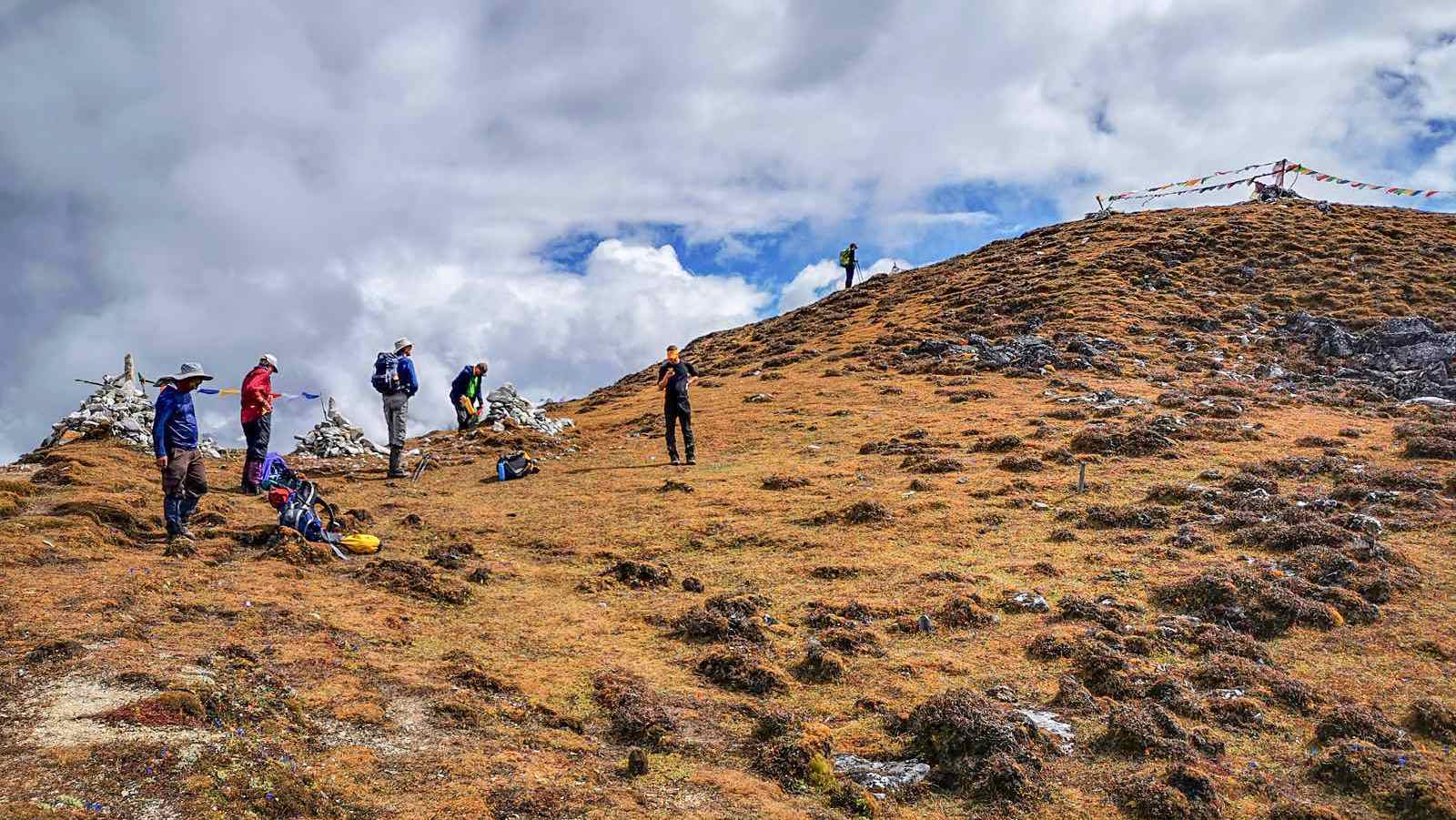
- Shinge La Pass: Rising to an altitude of approximately 4,900 meters, Shinge La is one of the most challenging and rewarding passes on the trek. It provides trekkers with panoramic views of the surrounding peaks and valleys. The approach and descent from the pass are steep and can be quite demanding, requiring good stamina and acclimatization.
- Nyile La Pass: This pass, situated at around 4,870 meters, is another significant challenge on the trek. As trekkers cross Nyile La, they are rewarded with spectacular views of the Himalayan landscape, including distant glimpses of Mount Jomolhari. The terrain here is rugged and often windswept, adding to the sense of adventure.
- Tsemo La Pass: Though slightly less high than the others, Tsemo La at about 4,800 meters still presents a formidable challenge. It connects the remote Laya region with the rest of Bhutan, serving as a crucial passage for both locals and trekkers. The pass is often shrouded in mist, creating a mystic atmosphere.
- Karchung La Pass: One of the lesser-known but equally challenging passes, Karchung La reaches an altitude of around 4,600 meters. It offers some of the most untouched scenic beauty along the trek, with lush valleys on one side and rugged mountain terrain on the other.
Preparing for the Passes
- Acclimatization: Spend adequate time acclimatizing to the high altitude before attempting to cross the passes. This helps prevent altitude sickness and increases physical performance.
- Proper Gear: Ensure you have the right gear for crossing high-altitude passes. This includes warm clothing, sturdy trekking boots, and trekking poles for additional stability.
- Physical Fitness: Being in good physical condition is crucial for tackling these high-altitude challenges. Regular cardiovascular and strength training months before the trek can greatly enhance your trekking experience.
- Guide and Support: Trekking with a knowledgeable guide from Amen Bhutan Tours and Treks ensures that you have expert navigation and support throughout these challenging sections. They can also provide valuable insights into the best practices for safely crossing these passes.
Crossing these high mountain passes during the Laya Gasa Trek not only tests your physical and mental stamina but also provides some of the most unforgettable experiences of the trek, with each pass offering unique vistas and a distinct sense of achievement.
Spiritual Sites
The Laya Gasa Trek offers not only an exploration of breathtaking natural landscapes but also a profound spiritual journey, as the path winds through numerous sacred sites deeply rooted in Bhutanese Buddhism. These spiritual sites provide trekkers with an intimate glimpse into the religious practices and beliefs that are integral to Bhutanese culture.

Key Spiritual Sites Along the Laya Gasa Trek
- Taktsang Monastery (Tiger's Nest): Although not directly on the trekking route, many trekkers visit Taktsang Monastery before starting the Laya Gasa Trek. Perched on a cliffside, this iconic monastery is one of Bhutan's most revered religious sites, believed to be the meditation place of Guru Rinpoche, who introduced Buddhism to Bhutan.
- Jangothang Temple: Located near the base camp of Mount Jomolhari, Jangothang Temple is a serene spot where trekkers can soak in the spiritual ambiance with the impressive backdrop of the mountain. It's a perfect place for meditation and reflection amidst the Himalayan wilderness.
- Lingshi Monastery: This ancient monastery, nestled in the Lingshi region, serves as a spiritual hub for the local community and is frequented by trekkers passing through. The monastery is known for its architectural beauty and the spiritual solace it offers, with stunning views of the surrounding mountains.
- Chebisa Village Temples: In the small, picturesque village of Chebisa, trekkers can visit several small temples. These are integral to the spiritual life of the village and offer a unique opportunity to observe and even participate in daily religious practices.
- Kunzangdrak Monastery: Accessible through a side trail off the main trekking path, Kunzangdrak Monastery clings to the side of a rock cliff. It is less visited by tourists, offering a more secluded and intimate spiritual experience.
Spiritual Experiences on the Trek
- Prayer Flags: Throughout the trek, you will encounter numerous prayer flags strung across mountain passes and spiritual sites. These colorful flags are inscribed with prayers and mantras, believed to spread goodwill and compassion with the wind.
- Mani Stones: Along the trails, trekkers often find stones carved with mantras and deities, known as Mani stones. These stones are a testament to the deep-rooted spirituality that permeates the landscape.
- Local Rituals: Participating in or witnessing local rituals and ceremonies can be a profound aspect of the trek. These rituals are a window into the spiritual practices that have shaped Bhutanese culture for centuries.
These spiritual sites and experiences enrich the Laya Gasa Trek, making it not just a physical journey but also a passage through the spiritual heritage of Bhutan. For many, this aspect of the trek becomes a highlight, offering moments of reflection and peace in the midst of the rugged Himalayan beauty.
Diverse Ecosystems
The Laya Gasa Trek traverses some of the most diverse and ecologically rich environments in Bhutan, showcasing a wide range of ecosystems from lush subtropical forests to rugged alpine zones. This diversity not only makes the trek visually stunning but also provides trekkers with the opportunity to experience and learn about the complex ecological systems that exist within Bhutan's protected landscapes.
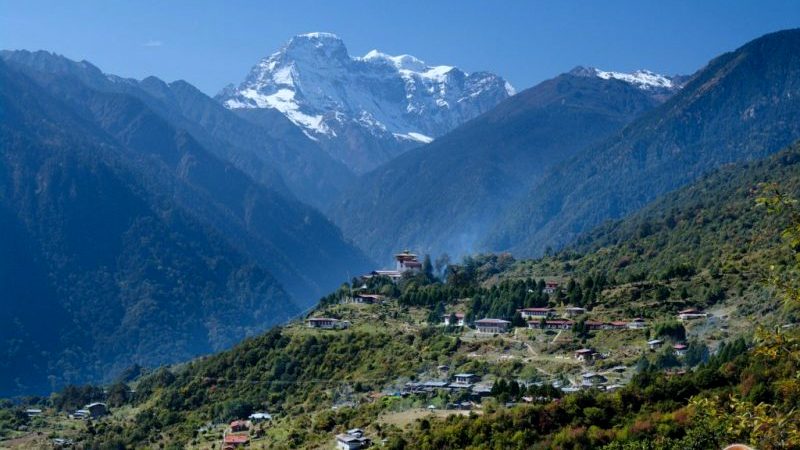
- Subtropical Forests: The trek begins in the lower altitudes, where the environment is characterized by dense subtropical forests. These forests are rich in biodiversity, housing numerous species of birds, mammals, and a lush undergrowth of shrubs and flowering plants, including orchids and rhododendrons.
- Temperate Forests: As the trek ascends, the subtropical forests transition into cooler temperate zones. These forests are dominated by broadleaf species in the lower temperate zones and conifers in the higher zones. Oaks, birches, and various species of conifers create a dense canopy, under which a variety of ferns, mosses, and fungi thrive.
- Bamboo Forests: In certain areas along the trek, dense bamboo forests provide a unique habitat that supports specific wildlife such as the red panda. Bamboo plays a crucial role in the diet of many animals and adds to the structural diversity of the habitats along the trail.
- Alpine Meadows and Scrubs: Above the treeline, the landscape opens into expansive alpine meadows and scrubs, characterized by low-lying shrubs, hardy grasses, and seasonal wildflowers. These areas are particularly vibrant in the spring and summer when they bloom with a variety of wildflowers, creating a colorful tapestry against the stark mountain backdrop.
- High Altitude Wetlands: The trek also encompasses high-altitude wetlands, which are critical for biodiversity. These wetlands are not only important bird habitats but also serve as the sources of streams and rivers, playing a crucial role in the hydrology of the region.
- Glacial and Snow-Capped Environments: The highest sections of the trek near the mountain passes expose trekkers to glacial landscapes and perpetual snow cover. This harsh environment supports a limited but specialized range of flora and fauna adapted to cold and low oxygen levels.
- Ecological Importance: These diverse ecosystems are not only important for wildlife but also play a crucial role in the livelihoods of local communities and the overall ecological health of the region. They help in maintaining the hydrological cycle, prevent soil erosion, and serve as a critical carbon sink.
- Conservation Efforts: The entire region of the Laya Gasa Trek falls within protected areas, which helps ensure the conservation of these diverse ecosystems. Efforts by Bhutanese authorities and local communities focus on preserving the natural heritage while promoting sustainable tourism practices.
The ecological diversity encountered on the Laya Gasa Trek enhances the trekking experience, providing trekkers with countless opportunities to connect with nature at its most pristine. This rich variety of ecosystems is a highlight for many on the trek, offering endless moments of awe and a deeper appreciation for Bhutan’s natural beauty.
Best Time for Laya Gasa Trek
Choosing the best time to undertake the Laya Gasa Trek is crucial for maximizing both the enjoyment and safety of the journey. The trek's high-altitude routes and remote nature mean that weather conditions play a significant role in determining the optimal times for trekking.
Spring (April to June):
- Weather: During the spring, the weather is generally stable with moderate temperatures, making it ideal for trekking. The skies are clear, providing excellent visibility of the majestic Himalayan peaks.
- Natural Beauty: Spring is particularly vibrant as rhododendrons and other wildflowers bloom in abundance, carpeting the landscape in a riot of colors. The forests and meadows are lush and green after the winter snows melt.
- Wildlife: This is also a great time for wildlife viewing as animals are more active after the winter season.
Autumn (September to November):
- Weather: Autumn is another preferred time for the Laya Gasa Trek due to its stable and clear weather. Like spring, this season offers dry days with less likelihood of rain and snow, which is crucial for crossing high passes safely.
- Visibility: The post-monsoon clarity means the air is crisp, and the mountain views are at their best. The visibility of peaks such as Jomolhari is often unparalleled during this time.
- Cultural Festivals: Autumn coincides with several local festivals in Bhutan, providing trekkers with an added opportunity to experience Bhutanese culture in full celebration.
Times to Avoid:
- Monsoon (July to August): The monsoon season brings heavy rains, which can cause trails to become slippery and dangerous. Additionally, the persistent cloud cover can obscure mountain views, and there is a higher risk of landslides and leeches along the trail.
- Winter (December to February): While winter can offer clear skies, the temperatures in high-altitude areas can be extremely low, making it challenging and potentially hazardous to cross frozen passes. The snow can also block some of the high passes and make the trail difficult to navigate.
Additional Considerations:
- Acclimatization: Regardless of the season, it's vital to schedule adequate time for acclimatization to avoid altitude sickness.
- Preparation: Make sure to have the appropriate gear for the expected weather conditions, including layers for cold weather during spring and autumn and waterproof gear if trekking on the edges of the monsoon season.
Planning your trek during the optimal seasons of spring or autumn will enhance the overall experience, offering not only safer trekking conditions but also more rewarding views and richer interactions with the environment and culture of Bhutan.
Laya Gasa Trek Safety Tips
The Laya Gasa Trek is a challenging high-altitude adventure in Bhutan, and ensuring safety is crucial for a successful and enjoyable experience. Here are some essential safety tips highlighted for trekkers planning to embark on this journey:
- Acclimatization: Take time to acclimatize properly to avoid altitude sickness. Plan your itinerary to include days for rest and gradual ascent, especially before tackling higher altitudes.
- Hire a Professional Guide: Always trek with a licensed and experienced guide. Guides from reputable companies like Amen Bhutan Tours and Treks are familiar with the terrain, weather conditions, and safety protocols.
- Proper Gear and Clothing: Ensure you have the right gear for varying weather conditions. This includes waterproof clothing, sturdy trekking boots, layers for cold weather, and a good quality sleeping bag.
- Weather Awareness: Stay informed about the weather forecasts and be prepared for sudden changes. High-altitude weather can be unpredictable, so having contingency plans is important.
- Stay Hydrated and Nourished: Drink plenty of water and eat balanced meals to maintain energy levels. High altitudes can dehydrate you faster than at sea level.
- Carry a First Aid Kit: Always carry a basic first aid kit equipped with essentials like bandages, antiseptic, pain relievers, altitude sickness medication, and personal medications.
- Travel Insurance: Obtain travel insurance that covers high-altitude trekking and medical evacuation. Ensure it provides adequate coverage for any trekking activities.
- Communication Preparedness: Have means to communicate in case of emergency. While mobile reception may be limited, satellite phones or radios can be vital in remote areas.
- Respect Local Customs and Environment: Follow the guidelines set by your guides regarding local customs and environmental conservation. Respecting the local culture and nature will enhance your experience and ensure safety.
- Avoid Trekking Alone: Always trek in groups. If you encounter a problem, having someone with you can make a significant difference in managing the situation.
By adhering to these safety tips, trekkers can significantly reduce risks and enjoy the incredible experiences that the Laya Gasa Trek has to offer. Safety is paramount, and being well-prepared will help ensure a memorable and safe adventure through the stunning landscapes of Bhutan.
The Laya Gasa Trek stands out as one of Bhutan's most magnificent and adventurous high-altitude treks, offering an unparalleled blend of breathtaking natural beauty, rich cultural immersion, and challenging trekking experiences. By journeying through remote villages, diverse ecosystems, and stunning mountain passes, trekkers gain a unique insight into the pristine wilderness and traditional lifestyles of Bhutan. With careful planning, respect for local customs, and adherence to safety protocols, this trek promises not only a physical journey but also a profound personal transformation. Whether you're a seasoned trekker seeking a new challenge or a nature lover yearning for untouched landscapes, the Laya Gasa Trek is a once-in-a-lifetime adventure that epitomizes the spirit of exploration and the beauty of Bhutan.
FAQs on Laya Gasa Trek
Q: How long does the Laya Gasa Trek take?
A: The trek typically takes between 14 to 19 days, depending on the chosen itinerary and the pace of the trekking group.
Q: What is the best time of year to go on the Laya Gasa Trek?
A: The best times to embark on the Laya Gasa Trek are during the spring (April to June) and autumn (September to November) seasons. These periods offer the most stable weather conditions and clear skies.
Q: What is the difficulty level of the Laya Gasa Trek?
A: The Laya Gasa Trek is considered challenging due to its length, altitude, and remote terrain. It requires good physical fitness, proper acclimatization, and trekking experience at high altitudes.
Q: What kind of accommodations are available on the Laya Gasa Trek?
A: Accommodations on the trek are primarily basic camping sites where trekkers sleep in tents. Some villages may offer homestays or simple guesthouses, but these are not available throughout the trek.
Q: Do I need a guide for the Laya Gasa Trek?
A: Yes, a guide is mandatory for the Laya Gasa Trek. Guides can provide valuable insights into the local culture, ensure safety, and help with navigation through the remote trails.
Q: What should I pack for the Laya Gasa Trek?
A: Essential items include a good quality sleeping bag, layers of thermal and waterproof clothing, sturdy trekking boots, a first aid kit, a water purification system, and snacks for energy. It's also recommended to carry a portable charger and a camera.
Q: Are there any permits required for the Laya Gasa Trek?
A: Yes, you will need several permits, including a route permit and an entry permit to the national parks. These are usually arranged by your tour operator.
Q: How do I prepare physically for the trek?
A: It's advised to engage in cardiovascular activities such as hiking, jogging, or cycling, and strength training several months before the trek to build endurance and physical fitness.
Q: Is altitude sickness a concern on the Laya Gasa Trek?
A: Yes, altitude sickness is a risk due to the high elevations reached during the trek. It is essential to acclimatize properly and recognize symptoms early. Carrying altitude sickness medication is recommended.
Q: Can I customize my Laya Gasa Trek itinerary?
A: Many tour operators, including Amen Bhutan Tours and Treks, offer customizable itineraries. Adjustments can usually be made based on your interests, physical fitness, and time constraints.
If you are looking for tour packages in Bhutan please click here
If you need any further information, please contact us, Email: at [email protected] , Phone (Whatsapp or Viber) +975-1755-6636
